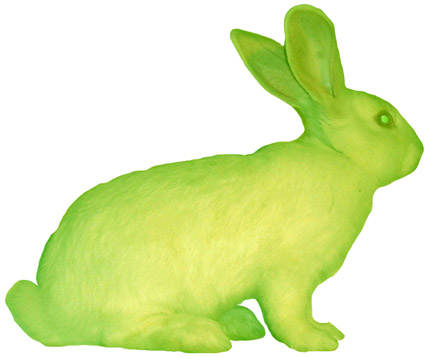The alteration of DNA has played a huge role in creating and saving many different organisms lives. For example, the artist Eduardo Kac created the transgenic artwork of the "GFP Bunny". The integration of fluorescent green protein into the genome via zygote microinjection created a glowing bunny when put in the proper lighting. Although genetic engineering of organisms is commonly regarded as unethical, Kac has proven that Alba's physical characteristics are identical to any and all albino rabbits. Despite the unethical claims by many, I find this genetic modification extremely fascinating. Mac stated in his article that one of the most difficult parts of the transgenic process was the responses from the public. Biotechnological art seems to be largely regarded as a controversial and is commonly questioned in society due to ethical values.

Discussing examples of biotechnology art, it would be hard not to consider genetically modified foods the most relatable. Genetically modified foods are created from genetic material that has been artificially modified through genetic engineering. Th genetic modification of food is a highly debated topic in today's society. Despite GMO's being more resistant to insect pests, modified genes have the potential to be released into the wild and spread. When the herbicide resistant genes are spread into the wild weed population, there is a worry that a "supersede" that is unaffected by herbicides will overcome natural plant and animal populations.
It is interesting to analyze both sides of the biotechnology topic. While we can analyze and explore uncharted territory within nature, the results can have a negative impact if not carefully practiced. For Alba, because the bunny's physical characteristics and the environment were not damaged, I would not consider this a harmful act. However, in the case of genetically modified crops, there is potential for lasting impacts that could negatively effect the environment. Regardless of the stated examples, there is valid arguments on either side when discussing social and ethical issues concerning this topic.
Works Cited:
"Center for Food Safety | Issues | GE Foods | About GE Foods." Center for Food Safety. N.p., n.d. Web. 10 May 2015. <http://www.centerforfoodsafety.org/issues/311/ge-foods/about-ge-foods#>.
"GFP BUNNY." GFP BUNNY. N.p., n.d. Web. 10 May 2015. <http://www.ekac.org/gfpbunny.html#gfpbunnyanchor>.
"The Pros and Cons of GMO." Genetically Engineered Food News. N.p., n.d. Web. 10 May 2015. <http://geneticallyengineeredfoodnews.com/the-pros-and-cons-of-gmo>.
"Transgenic Bunny by Eduardo Kac." Transgenic Bunny by Eduardo Kac. N.p., n.d. Web. 10 May 2015. <http://www.genomenewsnetwork.org/articles/03_02/bunny_art.shtml>.
Vesna. "5 bioart pt1 1280x720." YouTube. N.p., n.d. Web. 10 Nov. 2013. Lecture Video
Hi Ford,
ReplyDeleteGreat post! You stressed the importance of safety when it comes to genetically modified food. Indeed, this has been a great concern around the world. Many people are worried that while GMO can have many obvious advantages, their might have some unobserved safety problems that can cause serious problems for people's health. In this sense, it might be a good idea to be really careful about bioart creations.